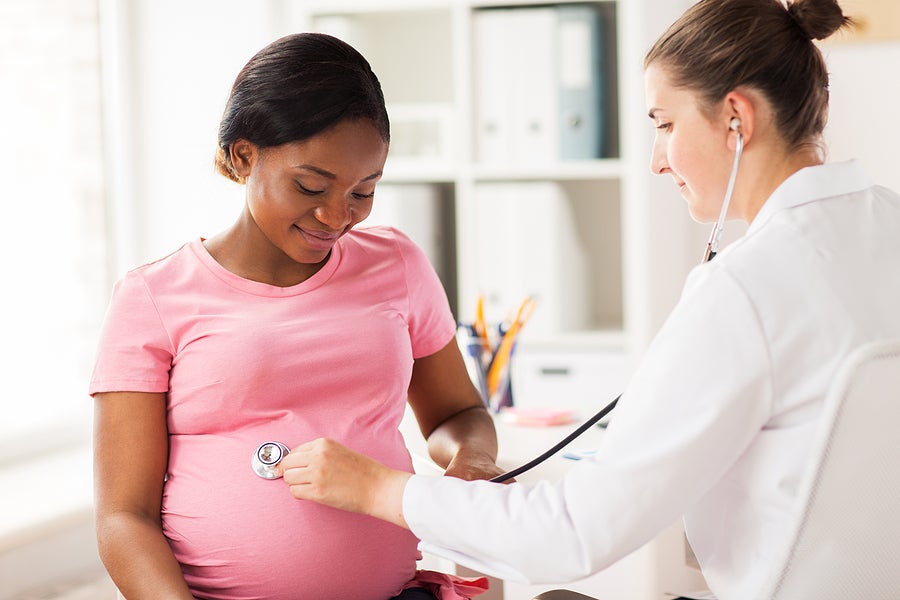Last month the Commonwealth Fund highlighted the role of freestanding birth centers in Community-Led Approach to Transforming Maternity Care. Freestanding birth centers, which use a midwifery and wellness model, provide a choice for families to deliver outside of a hospital or their home. The U.S. hosts 415 freestanding birth centers in 40 states and Washington, D.C. yet a small portion — less than 5% — are led by people of color. The majority of births in the U.S. are hospital-based, but a growing number of families are seeking to give birth at home or in a birth center. The midwifery care model has been shown to help reduce adverse birth outcomes such as preterm births, low-birthweight, cesarean sections, and NICU admissions. Approximately 20,000 births occur in birth centers, less than 0.5% of all U.S. births. Freestanding birth centers are separate entities from hospitals, but they often partner with hospitals and provide a full continuum of maternity care. They are typically staffed by midwives that are certified nurse-midwives (CNM) or other types of midwives such as certified professional midwives (CPM).
Figure 1: Graph by the American Association of Birth Centers that shows the growing trend of midwifery-led birth centers through time.
Birth centers emphasize a relationship-centric model which prioritizes developing relationships to build trust and assurance between birthing professionals, pregnant people and their families. Some birthing center midwives build on the work of midwife Jennie Joseph. LM, CPM, who came to the U.S. from Britain to make midwifery care more accessible thorough her work at Commensense Childbirth Easy Access Clinic based in Winter Garden, FL. Her JJ Way® Model of Maternity Care is recognized by the Association of Maternal and Child Health Programs as a promising practice based on its track record reducing disparities and improving birth outcomes.
The Commonwealth Fund article also highlights the work of socially-minded entrepreneurs like Rebecca Polston, certified professional midwife, who founded Roots Community Birth Center in Camden, a Minneapolis neighborhood with a high concentration of low-income Black families. Her practice serves 200 patients a year, with 80% identifying as Black or Indigenous and 60% covered by Medicaid. She says:
“Health happens in community and it happens in your heart. It’s not biometrics. That is something that we walk in and we infuse into every single patient encounter.”
Roots Community Birth Center boasts many positive outcomes in its 10 years of existence, including low rates of Cesarian delivery, higher than average breastfeeding rates, and low hospital transfer rates. Polston has built relationships with two local hospitals to ensure that transfers are seamless when an emergency requires more intensive medical intervention. Due to the “impossible math” faced by many birth centers, her practice has to raise a quarter of its annual budget with private dollars.
The piece also highlights efforts to stand up new birth centers in Detroit and Boston as well as previous attempts in New Mexico’s Navajo Nation that were not fully realized due to limited fundraising capacity faced by many community-based organizations seeking to interface with the health care system. Nicole Arthun, a certified nurse-midwife that founded the Changing Women Initiative, stated that she would write as many as 10 grant proposals a month but was never able to earn more than $100,000 a year. She stated this was due to limited funding for maternal health that is geared towards Indigenous populations. The center that Arthun and her team wanted to build would cost about $2.5 million, but they were never able to reach the goal. The article also highlights similar community-driven efforts in Michigan (Birth Detroit) and Massachusetts (Neighborhood Birth Center),
With an eye toward funding challenges and the need for more options in maternal health care, some states have been proactive in raising birth center payment rates in Medicaid. In Oregon, the state Medicaid agency sought a state plan amendment (SPA), approved by CMS, to raise the facility fee for birth centers from $1,200 to $3,700, which became effective July 1, 2023. Similarly, Washington State more than doubled the facility fee in 2016 to $2,500 for fee-for-service Medicaid births. Washington’s State’s Medicaid agency also pays midwives and physicians the same professional fee regardless of birth setting and for the same level of care.
CMS’s new funding opportunity, the Transforming Maternal Health (TMaH) Model, offers states funding and support to test out new approaches, including community-based providers freestanding birth centers that – if implemented in concert with community input — hold promise to more effectively address health inequities. (Is your state agency applying? Applications are due September 20th.)
Birth centers, built by and for communities, are critical successful efforts to improve maternal and infant health outcomes. States can use the focus on maternal health to further the work of birth centers by leveraging Medicaid to broaden the availability of birthing center models through provider and payment policies.



